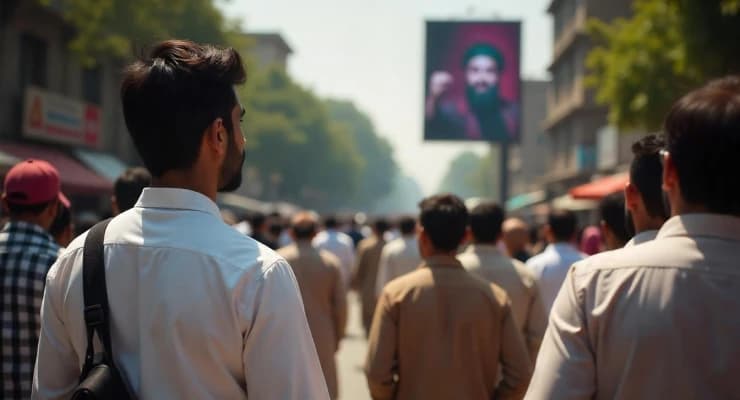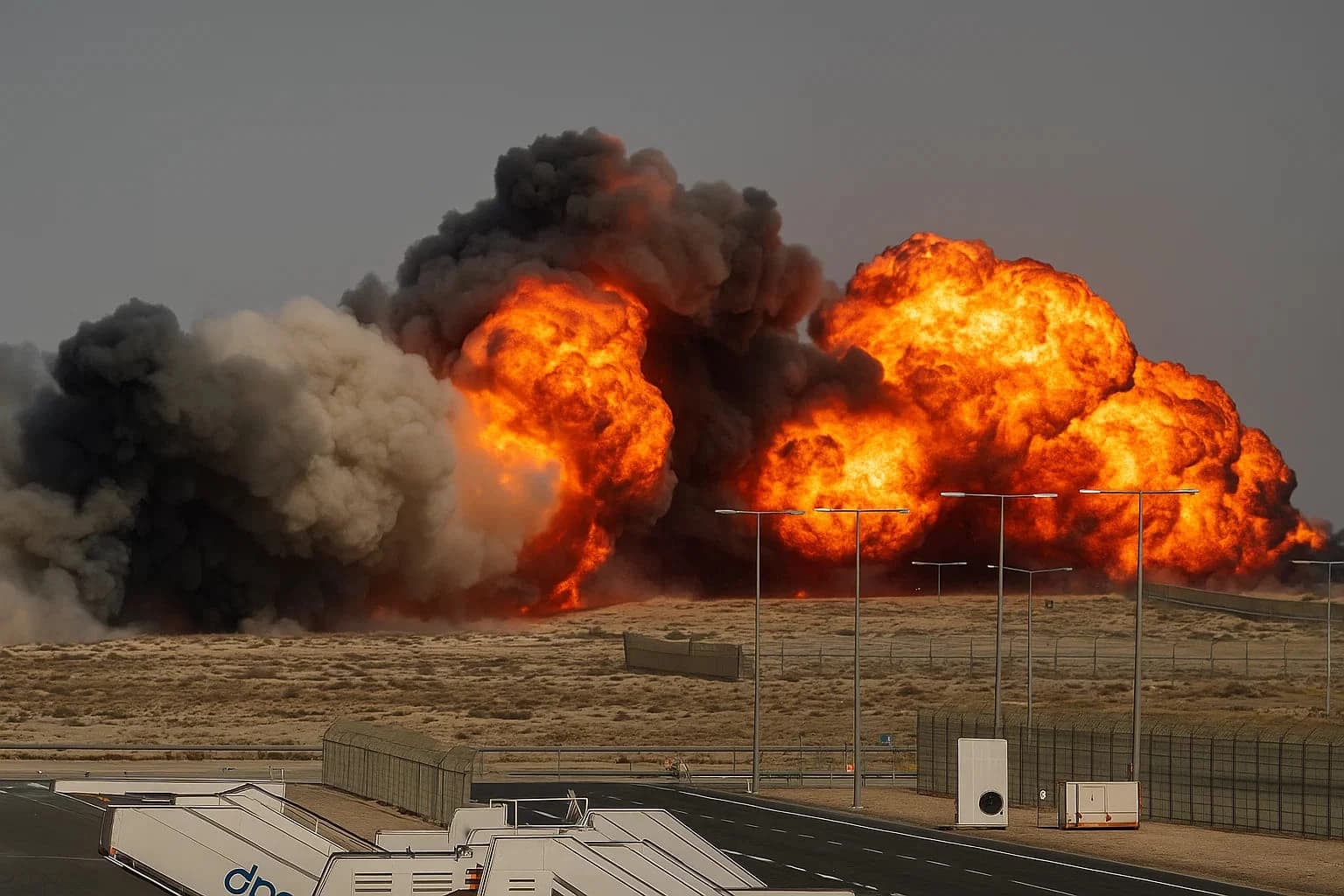© 2025 Roz UpdatesbyTETRA SEVEN

* All product/brand names, logos, and trademarks are property of their respective owners.
In an era where information travels at the speed of a click, disinformation has emerged as a formidable challenge across the globe — and Pakistan is no exception. From doctored videos and AI-generated deepfakes to politically motivated fake news campaigns, the digital landscape in Pakistan has become a battleground where truth is constantly under siege. This isn't merely an issue of fake news appearing in isolated corners of the internet; it’s a systemic problem that undermines trust in institutions, stirs political unrest, and compromises the very foundation of democratic discourse.
Pakistan’s ongoing struggle with disinformation is multi-faceted. On one hand, the state is actively trying to legislate and regulate online spaces through tools like the Prevention of Electronic Crimes Act (PECA) and by empowering entities like the National Counter Terrorism Authority (NACTA) and the newly proposed NCCIA. On the other, critics argue that these laws often blur the line between necessary regulation and oppressive censorship. Civil society organizations, journalists, and digital rights activists have frequently raised alarms over arbitrary clampdowns on dissent disguised as anti-disinformation efforts.
The urgency to address this issue has never been greater. In recent years, especially around politically charged events such as general elections or major protests, the internet has seen a surge in manipulated narratives. From widespread WhatsApp rumors to AI-generated speeches attributed to politicians, the disinformation ecosystem is growing in both sophistication and impact. At the same time, independent fact-checking organizations and digital rights groups are working tirelessly to expose falsehoods and educate the public, often with limited resources.
This blog dives into Pakistan’s battle against disinformation: what strategies have shown promise, where efforts are falling short, and what more can be done. By evaluating both governmental and grassroots responses, we aim to present a balanced, in-depth look at one of the most pressing issues facing Pakistan's information landscape today.
Disinformation in Pakistan is not just an emerging problem—it is a deeply entrenched issue shaped by decades of political turmoil, evolving media landscapes, and rising internet penetration. While the term may sound modern, the tactics are not new. From the spread of politically charged leaflets in the pre-digital era to today’s viral WhatsApp forwards and AI-generated fake videos, the evolution has been steady—and increasingly dangerous.
Disinformation refers specifically to deliberately false information spread with the intent to mislead. Unlike misinformation, which may be unintentional, disinformation is strategic and often weaponized to influence public opinion, provoke unrest, or manipulate elections. In Pakistan, such campaigns often target political opponents, ethnic groups, or religious minorities, exacerbating tensions in an already polarized society.
The primary breeding grounds for disinformation in Pakistan are social media platforms—particularly Facebook, YouTube, TikTok, and Twitter (now X). Closed platforms like WhatsApp and Telegram further complicate detection and response. Viral messages ranging from falsified government notifications to deepfake speeches have been shared millions of times, often with no easy way to trace or debunk them effectively.
Some high-profile disinformation incidents in recent years include doctored images of political rallies, fake audio recordings allegedly linking politicians to conspiracies, and sensationalist reporting from unverified online portals. During the 2024 general elections, for instance, a wave of deepfake videos claimed to show rigging and vote tampering—many of which were later proven fake but had already done damage.
Globally, this aligns with trends seen in countries like India, Brazil, and the U.S., where political actors have used digital platforms to manipulate narratives. What makes Pakistan’s case more complex is the overlapping influence of security concerns, state surveillance, and a history of military involvement in media control.
Pakistan’s response to the disinformation crisis has evolved significantly over the past decade. While initial efforts were fragmented and reactive, recent years have seen a more structured and multi-pronged approach involving legal reform, institutional development, and growing civil society engagement. The challenge remains steep, but some measurable progress has been made in curbing the flow and impact of fake news.
The most prominent legal framework addressing digital misinformation is the Prevention of Electronic Crimes Act (PECA), enacted in 2016 and later amended. PECA criminalizes the spread of false information online, particularly content that threatens public order, defames individuals, or incites violence. Despite controversies around its use, it has provided a legal basis to prosecute egregious cases of disinformation.
In 2024, the government proposed additional amendments to PECA and introduced the National Cyber Crime Investigation Agency (NCCIA) under the Ministry of Interior. The NCCIA was envisioned to act as a centralized body for tracking, analyzing, and responding to cybercrime, including coordinated disinformation campaigns. Early trials of the agency’s AI-driven monitoring systems have shown some promise in identifying fake news networks in real time.
Beyond legal measures, the state-run Pakistan Electronic Media Regulatory Authority (PEMRA) has stepped up its monitoring of television and digital media outlets, penalizing those found spreading fabricated reports. At the same time, several media houses have established internal fact-checking desks—an important step in restoring public trust.
Notably, ISPR (Inter-Services Public Relations) has taken an active role in countering narratives seen as harmful to national security. While some see this as necessary in a volatile security environment, others argue it risks overstepping and infringing on free expression.
Perhaps the most vital—and credible—efforts have come from Pakistan’s civil society. Organizations like the Digital Rights Foundation (DRF) and Media Matters for Democracy have launched awareness campaigns, published toolkits for identifying fake news, and collaborated with tech platforms to flag problematic content.
Platforms like Soch Fact Check and Surkhi.pk are now recognized as reliable sources for debunking viral hoaxes, especially during politically sensitive periods like elections or crises. Their reach, however, remains limited by funding constraints and online visibility issues.
While efforts to combat disinformation in Pakistan are undeniably growing, critical challenges continue to undermine their effectiveness. The line between regulation and suppression remains thin, and public trust in these efforts is shaky at best. For Pakistan to truly build resilience against fake news, it must address not just the technological and legal facets but also the deeper socio-political issues driving distrust and misinformation.
Though PECA and NCCIA are in place, their enforcement is inconsistent. Many cases are pursued selectively, often targeting political opponents or dissidents while ignoring more dangerous, viral falsehoods. Courts are frequently burdened with politically charged cases involving vague allegations of “spreading fake news,” with little tangible evidence.
Moreover, laws such as the Punjab Defamation Act have been criticized for being vague and open to misuse. Critics argue that the legal landscape enables harassment rather than offering genuine protection from harm, often silencing journalists, bloggers, and whistleblowers in the process.
A recurring concern from human rights organizations is that the government’s fight against disinformation is sometimes a front for broader censorship. Bans on platforms like X (formerly Twitter), sweeping content removals, and internet shutdowns during political events paint a troubling picture.
This perceived overreach erodes public trust and can inadvertently make disinformation worse. When legitimate voices are suppressed, people are more likely to turn to unverified sources, increasing the risk of exposure to fake content.
Another glaring gap is the low level of digital literacy across much of the population. Many users are unable to distinguish between real and manipulated content, particularly in rural areas where media literacy is limited. Efforts to educate the public are fragmented and underfunded, with little reach outside urban centers.
Additionally, there’s a trust deficit between citizens and state-run media or initiatives. Without broader public buy-in, even well-structured disinformation responses are likely to fall flat.
Pakistan’s fight against disinformation is a story of progress entangled with persistent pitfalls. On one hand, the state has acknowledged the scale of the problem and taken tangible steps—most notably through PECA, NCCIA, and various media regulations—to bring order to the chaotic digital ecosystem. Civil society and grassroots initiatives have also stepped up, pushing forward with fact-checking efforts and public awareness campaigns despite limited support. Together, these efforts mark important strides in the nation’s bid to contain and counter harmful narratives.
However, these measures are far from perfect. The very tools meant to protect the public are often weaponized to silence dissent, fueling suspicion and weakening the legitimacy of disinformation policies. Without a fair, transparent legal framework and a more inclusive approach that empowers both media and citizens, trust in institutional responses will remain fragile. Moreover, digital literacy remains dangerously low, creating fertile ground for rumors, conspiracy theories, and AI-driven content to thrive unchecked.
If Pakistan hopes to truly win this battle, it must adopt a balanced strategy: enforce accountability without curbing freedoms, invest in education and media literacy, and foster partnerships between the state, tech platforms, and civil society. The fight against disinformation isn’t just a policy issue—it’s a national imperative that demands thoughtful, sustained collaboration from all corners of society.

22 November 2025

18 November 2025
No comments yet. Be the first to comment!